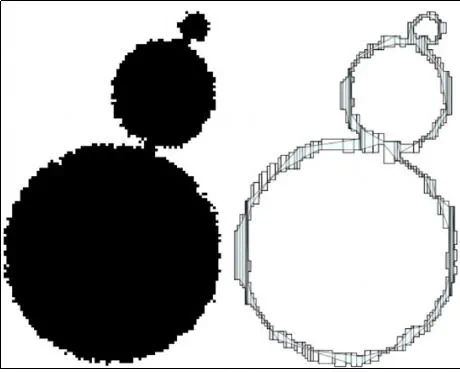A combined multi-scale/irregular algorithm for the vectorization of noisy digital contours
Jan 1, 2013·,, ·
0 min read
·
0 min read
A. Vacavant
T. Roussillon
B. Kerautret
Jacques-Olivier Lachaud

Abstract
This paper proposes and evaluates a new method for reconstructing a polygonal representation from arbitrary digital contours that are possibly damaged or coming from the segmentation of noisy data. The method consists in two stages. In the first stage, a multi-scale analysis of the contour is conducted so as to identify noisy or damaged parts of the contour as well as the intensity of the perturbation. All the identified scales are then merged so that the input data is covered by a set of pixels whose size is increased according to the local intensity of noise. The second stage consists in transforming this set of resized pixels into an irregular isothetic object composed of an ordered set of rectangular and axisaligned cells. Its topology is stored as a Reeb graph, which allows an easy pruning of its unnecessary spurious edges. Every remaining connected part has the topology of a circle and a polygonal representation is independently computed for each of them. Four different geometrical algorithms, including a new one, are reviewed for the latter task. These vectorization algorithms are experimentally evaluated and the whole method is also compared to previous works on both synthetic and true digital images. For fair comparisons, when possible, several error measures between the reconstruction and the ground truth are given for the different techniques.
Type
Publication
Computer Vision and Image Understanding, 117(4): 438–450, 2013
Noisy Object Analysis
Digital Geometry
Digital Straight Segment
Fuzzy Segment
Multiscale Analysis
2D
Digital Contour
Authors
Professor of Computer Science
My research interests include digital geometry, geometry processing, image analysis, variational models and discrete calculus.